A look at the details of the bike
The GPV-1 may be an RTR model, however it accepts quite a few adjustments and can be suitably hopped up.
Let's take a look at what it's made of!
CHASSIS
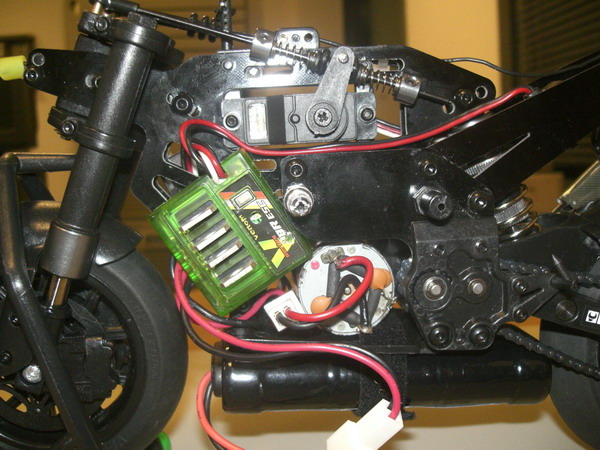
The chassis is GRP and plastic, but there are also aluminum parts supporting the chassis plates and other components.
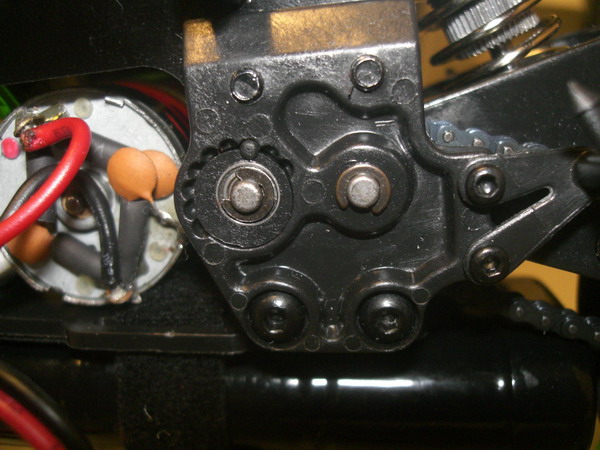
The chain tension is adjusted with these cam-type eccentric bearings. There's some novelty here, in that the front sprocket is not mounted on the same axle as that of the swing arm, in order to eliminate jacking up of the rear on abrupt throttle opening. This makes adjusting the chain very critical, but also very similar to a real bike.
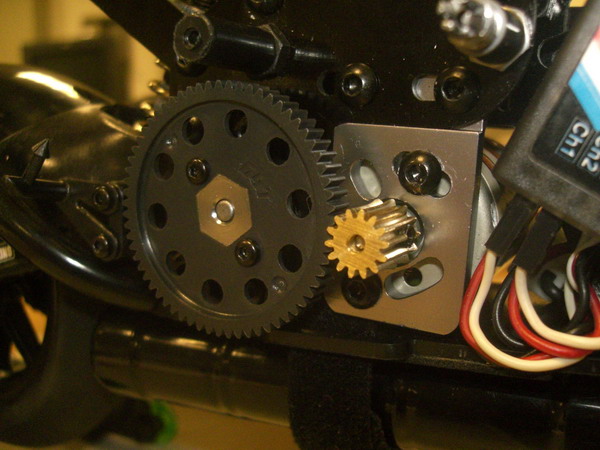
On the other side, you have to remove the spur to access the chain adjuster. The standard gearing is 64/15 and the pitch is very fine.
REAR SUSPENSION
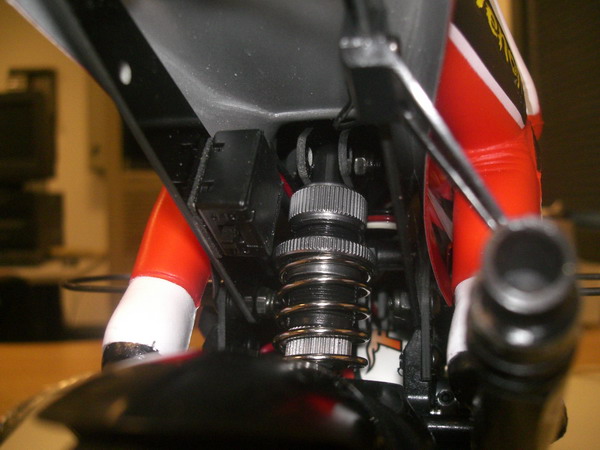
The rear shock is oil-filled and plastic-bodied with aluminum caps and is similar in size to the normal 1/10 TC shocks. It has adjustable preload. As you can see on the first pic (above) its top mounting position can be adjusted in 3 positions.
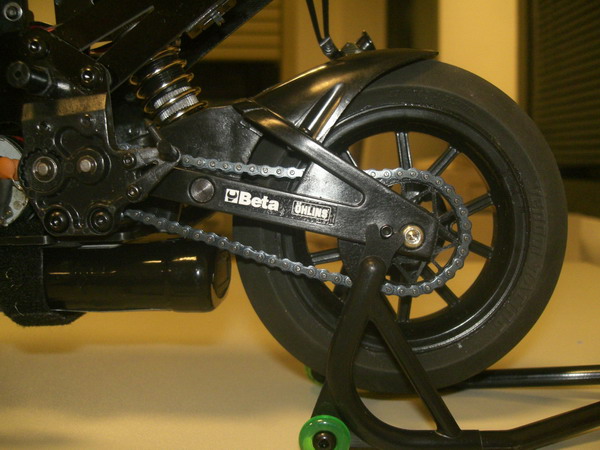
The drive chain is channeling power to the rear wheel through a bronze front sprocket and a plastic rear one. The swingarm is made of durable hard and non-flexing plastic. There are two tiny bolts near the rear wheel axle to support the stand. Nice detailing here! The kit wheels are the heaviest of the line, promises the GPV-1 owner's manual, and the tires are the hardest compound from a series of three compounds. The rear inner foam is MS, while the front one is Hard.
Battery placement is of course at the bottom of the chassis and the battery is held with a velcro strap. However, I believe there's scope for improvement here: The battery tray has a self sticking foam on it, in order probably to save the battery from some of the vibration. The problem is the battery moves fore and aft easily and can drag on the rear tire and/or chain. The solution is simple: Discard the foam and clean the battery tray very thoroughly. Then apply some self sticking velcro to it and the opposite parts on your batteries.
FRONT SUSPENSION
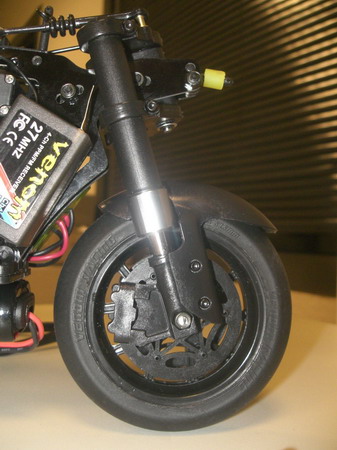
The front suspension consists of oil-filled USD forks, which offer a very smooth operation. The disc brakes are there for cosmetic reasons, but there are working disc brakes in the options list.
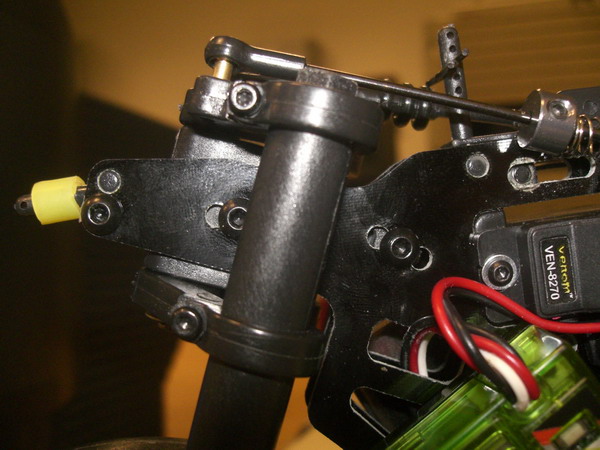
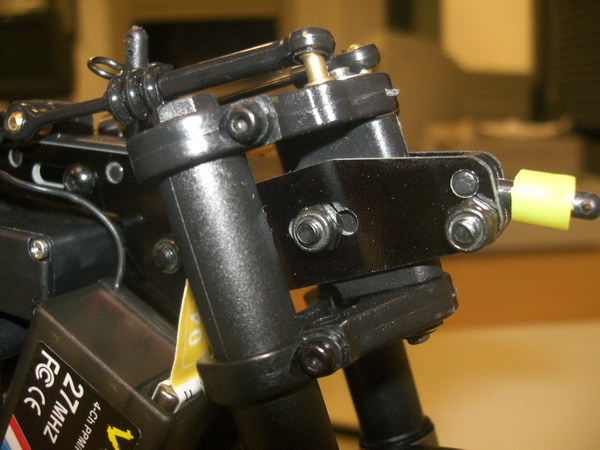
The steering stem can be adjusted for rake in three positions. This adjustment does not change the wheelbase.
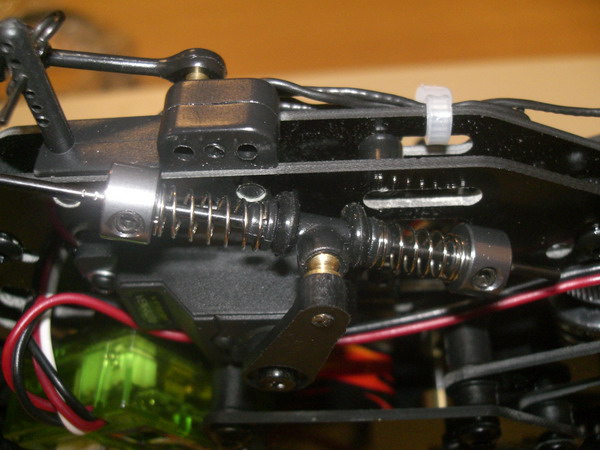
The steering servo takes care of steering the bike in exactly the same way the 1/5 bikes do. I moved the steering servo bolts to the right side of the frame, as was suggested at the RCG forum, and rightly so, in order for the bolts to not interfere with the steering rod action.
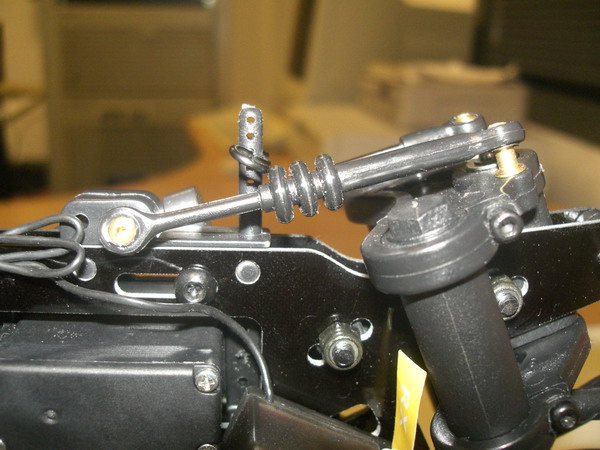
On the other side of the steering head there's a nice adjustable steering damper.
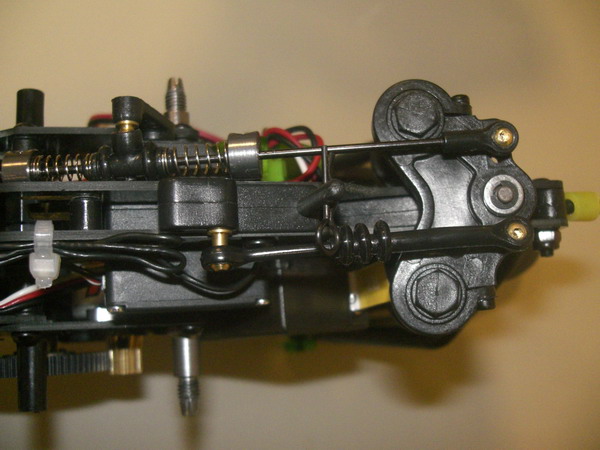
You can remove one or two or all the rubber o-rings to alter the steering damper's effect.
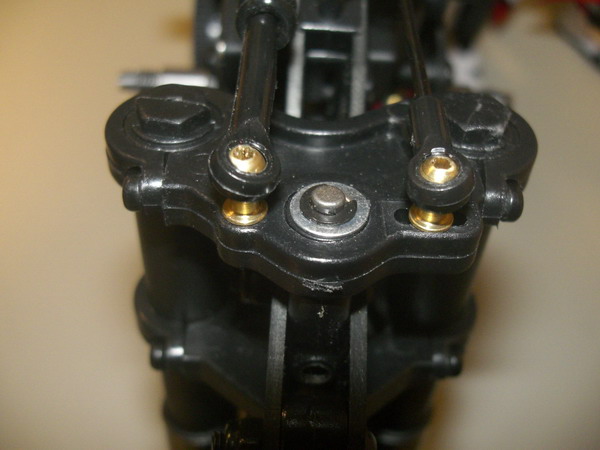
The steering rod's mounting point on the top triple clamp can also be adjusted to offer the sensitivity needed.
ELECTRONICS
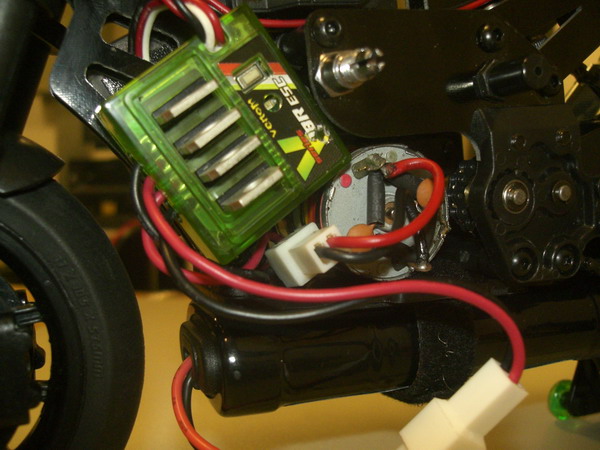
The supplied ESC is suitable for the bike and has FWD brake and Reverse. Reverse can be properly switched off, since it's never needed in a bike! The motor is a simple tin-can 370-size and is adequate for novices and small places alike. Venom claims that with the standard gearing it's capable of 44km/h with the supplied 6-cell 7.2V battery on standard 64/15 gearing.
The supplied radio is of the pistol grip type but it's far away from the norm in this type of models. It operates at 27MHz FM, has three channels -the 3rd channel being operated either by a top mounted switch or mixed (eg. brakes) with any of the two other channels. It has a nice LCD screen, 15-model memory (the bike is stored in memory No.1) and has a ton of detailed adjustments for virtually everything you will find on high-end radios.
The receiver is a compact 4-channel unit, offering provision for the brake servo and a personal transponder as well!
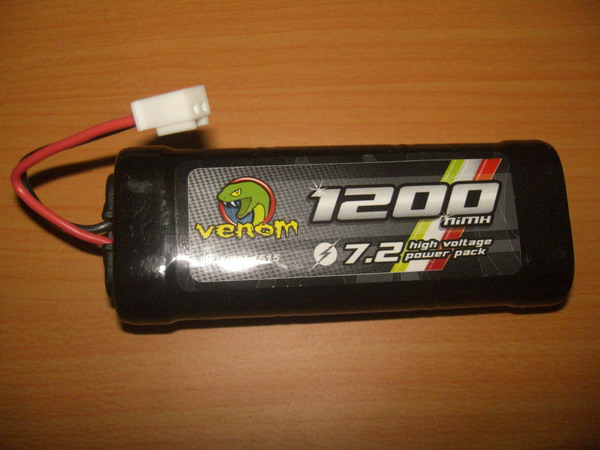
The battery supplied is Venom branded and it needs a couple of charge/discharge cycles before it performs as it should. It gives decent power and a duration in excess of 20 minutes of easy riding.
Last but not least, the kit comes complete with a very detailed owner's manual, should you decide to rebuild or repair the bike, a very thorough adjustment and tuning guide and even a blank setup sheet, so you can record your changes.
BODY AND RIDER
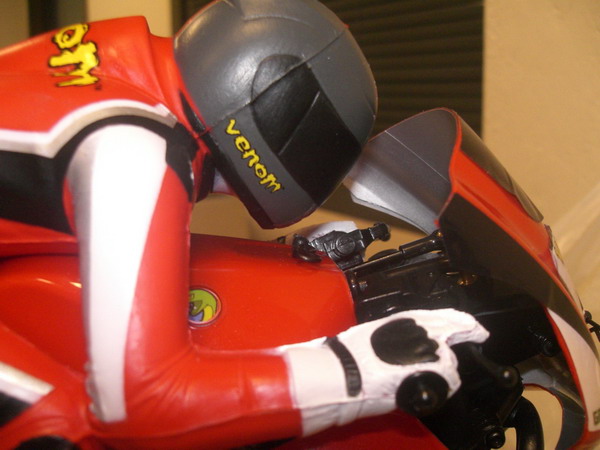
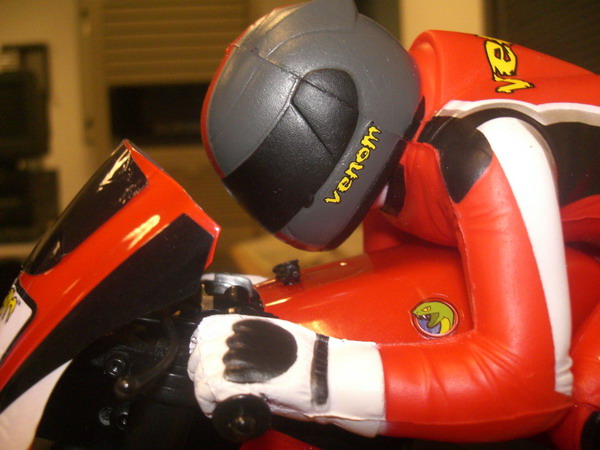
The body of the bike is prepainted lexan. The rider is made out of closed cell foam and has some nice detailing contained: His right hand has two fingers on the brake lever and his feet mount on specially formed plastic footrests.
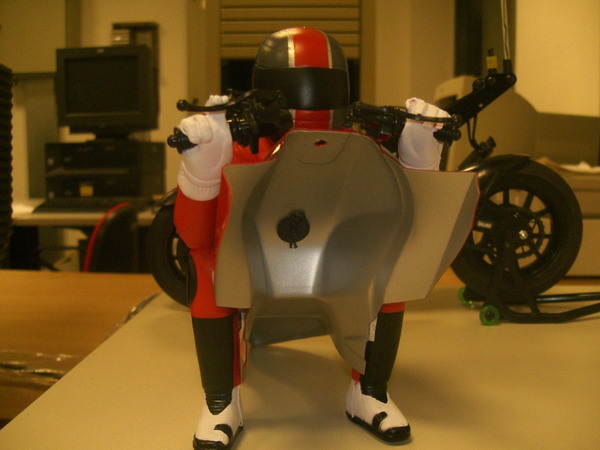
Underneath the rider there's a single R-clip that connects his chest to the tank and is strong enough a connection point that you can easily lift the whole bike by the rider's head or an arm.
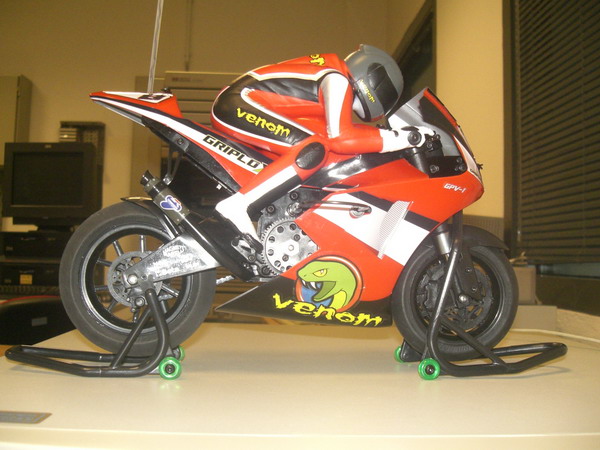
The bike comes complete with two paddock stands!
CHANGES AND OPTIONS
So far just a few of them:
- I added some slices of fuel tubing on the body mounts to prevent the internal R-clips from scratching the body. You can see the fluo green tubing on some pics!
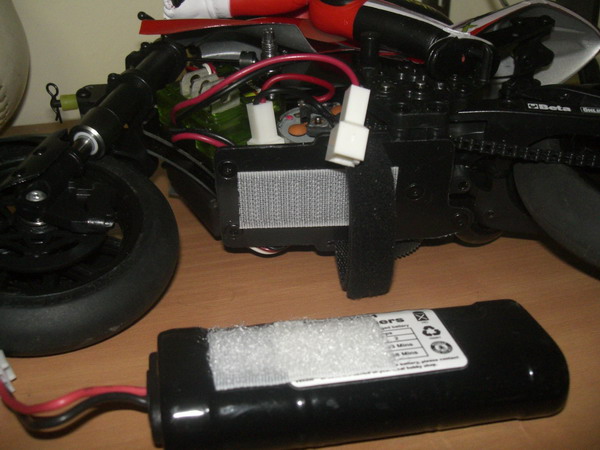
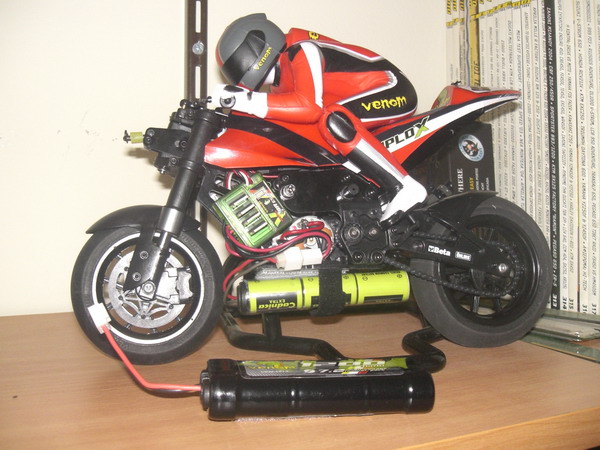
- I added velcro on the battery tray and all my batteries as well, so they stay in place.
- I bought Formby Models' optional nylon scratch bars and aluminum standoffs.
- Next in line will be a brushless system and a couple of suitable small LiPo batteries.
- I relocated the ESC because when the front wheel compressed fully it would touch or grind the ESC.
A wealth of tuning info can be found at RCGroups' motorcycle section.




